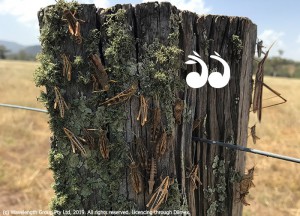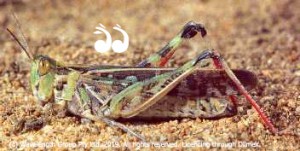They’re Hatching….
AUSTRALIAN Plague Locusts are now hatching in the Upper Hunter, dashing hopes the conditions would be too dry for them to breed.
Hunter Local Land Services said they had a great landholder and community response to the first sightings of the locusts during summer, which allowed them to map their movements, but now it is even more important to report for the local community to report sightings as they begin to lay eggs in the autumn.
There has been just enough rain to provide food for the locusts to breed and it is critical people report when they see the locusts banding as it is the only opportunity to use chemicals on the locusts and stop the breeding cycle.
Luke Booth, invasive species team leader for Hunter Local Land Services, said banding is when they come together to feed on the ground as a group before they prepare to fly to a nesting location and lay eggs.
“When they are banding, this is the only stage where these locusts can be sprayed, as once they are on the wing, it is too late,” said Mr Booth.
“We can supply landholders with chemicals to control banding locusts, and are already working with a number of property owners right now,” he said.
“If you suspect locusts are banding on your property, it is important you get in touch with your nearest bio-security officer as soon as possible,” Luke Booth said.
Chemical controls have been used on 16 properties to date across the Upper Hunter, with locusts found in Gundy and Rouchel, through to Denman and the Widden Valley.

The last outbreak of Australian plague locusts in the Upper Hunter was a decade ago. Photo: Hunter LLS.
In the autumn eggs are often laid in bare soil, frequently on clay pans or hard ground along tracks and fences.
Adult Australian plague locusts can be recognised from other species by the large dark spot on the tip of the hindwings and distinctive scarlet hindleg shanks.
Adult body colour is variable and can be grey, brown or green. Adult males measure 25-30 mm long while females are 30-42 mm long.
To learn more about the Australian Plague Locust visit: www.agriculture.gov.au.
Please report any sightings immediately to Hunter Local Land Services Bio-security: 1300 795 299.
Related stories:
- More Locusts Reported – February 5, 2019.
- Locusts Blow Into the Upper Hunter – January 21, 2019.
 scone.com.au
scone.com.au